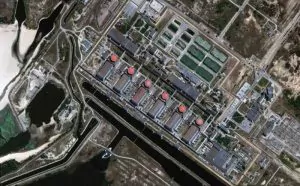Subscribe to our Telegram channel

The Financial Times: scientists declare no risk of a large-scale nuclear disaster at ZNPP
Most nuclear scientists are convinced that the probability of a catastrophe at Zaporizhzhia NPP is almost zero. The experts told The Financial Times about this in more detail.
«Our experts have carefully considered the worst-case scenarios, including bombing and deliberate sabotage of reactors and spent fuel storage casks. At this time, we see no reason to be concerned about a situation that would lead to radiation consequences for public health ,» the American Nuclear Society said.
One of the reasons for the calmness of nuclear scientists is the reliable protective shell of the six Zaporizhzhia VVER-1000 pressurized water reactors. Each of them is located inside a reinforced concrete fortress more than a meter thick, and the reactor building itself has a steel wall, said Mark Foreman, an associate professor of nuclear chemistry at Chalmers University of Technology.
«If someone detonates a bomb on the roof of ZNPP, they will be able to damage the containment structure, but even a cracked part can provide some protection. It is similar to a tank inside a fortress. There are many layers of protection. It takes a lot of effort to overcome them ,» Mark Forman summarized.
Another reason for the experts' confidence is that ZNPP has not been producing electricity for more than 10 months and its reactors have been shut down. In contrast, the Chornobyl NPP and the Fukushima plant in Japan were operating at full capacity shortly before the disasters.
As a reminder, Google’s artificial intelligence recently estimated the possibility of blowing up another hydroelectric power plant. The forecasts of the Bard chatbot developed by Google were published by the journalists of the News. LIVE publication.
«It's important to note that blowing up a hydroelectric power plant in Ukraine could have catastrophic consequences. Hydroelectric power plants play a vital role in providing electricity to Ukraine, and their destruction could lead to large-scale power outages. In addition, a hydroelectric power plant explosioncould cause flooding, which could lead to loss of life and property damage ,» Bard wrote, avoiding a direct answer.

